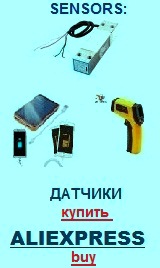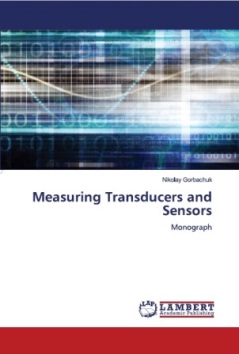Transducers, gauges, sensors - Information portal © 2011 - 2023 Use of material is possible by placing an active link
русский / english
Home >> Magnetic field >> Sensors are a hall - effect
• Information about various converters and sensors of physical quantities, parameters of various physical processes is presented.
• Electrophysical properties and effects in various electrical materials.
• Theory, experimental results, practical application
Home >> Magnetic field >> Magnetoresistive transducers

Magnetoresistive transducers
Magnetoresistive effect
The change in the magnetic field resistance of the semiconductor, in which electric current flows, is called magnetoresistive effect. The increase in electrical resistance under the action of the magnetic field occurs as in the case of perpendicularity of the magnetic induction vector of the surface of the semiconductor wafer (transverse magnetoresistance effect), and in the case of parallel (longitudinal magnetoresistance effect). However, the resistance change in the second case slightly.
The resistance change of a semiconductor in a magnetic field is proportional to the square of the mobility of current carriers
Δρ/ρ = c μ∧2 ⋅ B∧2 ,
where C is the proportionality factor associated with scattering of charge carriers.
In a semiconductor wafer placed in a magnetic field on moving charge carriers acts the Lorentz force, ravnovesnaya hall electric field. However, the hall field balances only those carriers which travel at average speeds. On slower media more field Hall, on a fast - Lorentz force, the trajectory and the other bent and the effective free path length decreases, which leads to an increase in resistance. It is obvious that the smaller the Hall effect in a semiconductor, the greater the resistance. In a semiconductor with two types of media field Hall less, so line current, and it is not parallel to the faces, and the magnetoresistance effect is correspondingly greater.
To eliminate the influence of the Hall effect can be in a semiconductor with a predominance of one type of carriers using special sample geometries. The most obvious example of the influence of the structure on the magnetoresistance effect is to drive the Corbin, which is a semiconductor wafer with concentric arrangement of contacts: one in the center and a second circumference at equal distances from the first. If the electrodes of such a drive voltage is applied, the trajectories of electrons will have the form of radial rays, radiating from the center. When placed in a magnetic field perpendicular to the plane of the plate, carriers are deflected along the surface streamlines are extended, but the accumulation of charges does not occur, and the pitch of the Hall does not occur. In this structure, there is a maximum magnetoresistance effect, however, due to technical difficulties the practical application of the Corbino disc is very difficult.
Design magnetoresistors
The effect of an increase of the magnetoresistance due to the geometry of the resistor can be achieved also in a semiconductor wafer whose length L is much less than its width W. When exposed to a plate of magnetic field the direction of which is perpendicular to the plane of the plate, the Hall is weakened due to the shunting effect of the current electrodes. Geometrically the effect of the magnetoresistance in this case manifests itself stronger the smaller the ratio L/W. to further increase the effect by connecting the resistors with a small ratio L/W.
The basis of the material magnetoresistor is indium antimonide having a high carrier mobility, to which is added 1.8% NiSb. After fusion and subsequent cooling of kristallizuetsya Nickel antimonide in indium antimonide in the form of needles with a thickness of 1 µm and a length of approximately 50 µm, are arranged parallel to each other and perpendicular to the direction of current. The conductivity needles of NiSb is about 10∧4 Ohm-1⋅cm-1,
a InSb two orders of magnitude smaller.
Thus, needle play the role of a good conductive electrodes, separating the bulk of the semiconductor to separate areas with a small ratio L/W. This leads to a sharp suppression of the Hall field, and hence to the curvature of the trajectories of electrons under magnetic field, i.e., to increase the magnetoresistance effect.
Another way of implementing this principle on the basis of microelectronic technology. Its essence lies in the formation of magnetoresistors based on silicon epitaxial film containing low-resistance shunt portions of polycrystalline silicon (PS), located perpendicular to the direction of the current.
The technology of manufacturing such magnetoresistive based on the simultaneous farming of mono - and polycrystalline silicon films (PS). Through processes of oxidation and photolithography are formed in the local region of SiO2, which in the process of growing the epitaxial film grow film PC.
For shorting of the Hall EMF is obtained doping regions PC with phosphorus atoms to a concentration of 10∧21 cm-3, and, given the higher rate of diffusion of atoms of dopant in the PC compared with monocrystalline silicon, the doping is carried out simultaneously with the process of creating the film in the monocrystalline n+-regions under the ohmic contacts.
See also:
CONVERTERS, GAUGES, SENSORS
Information, news, advertising


